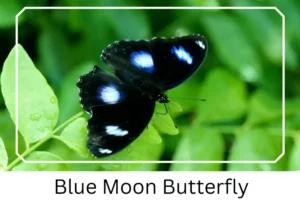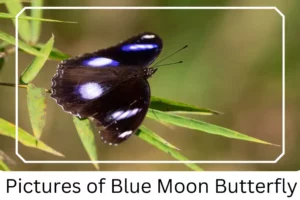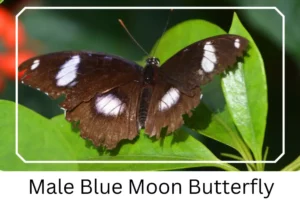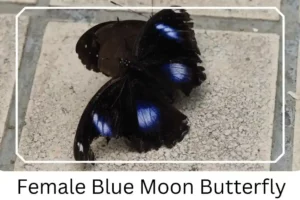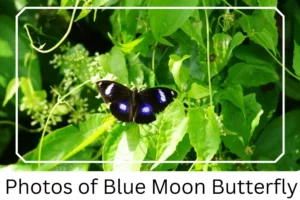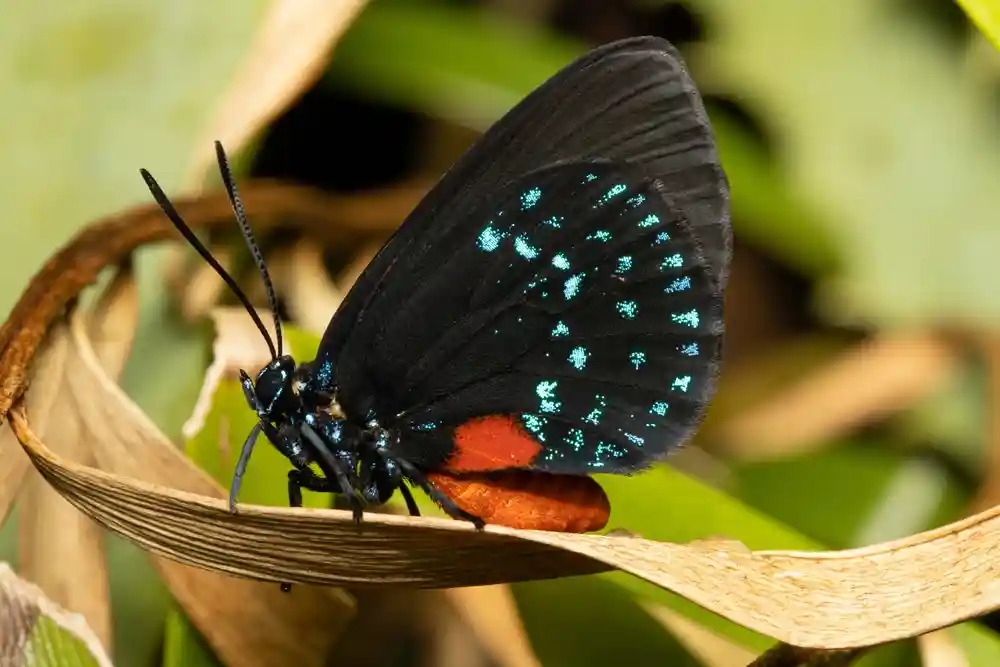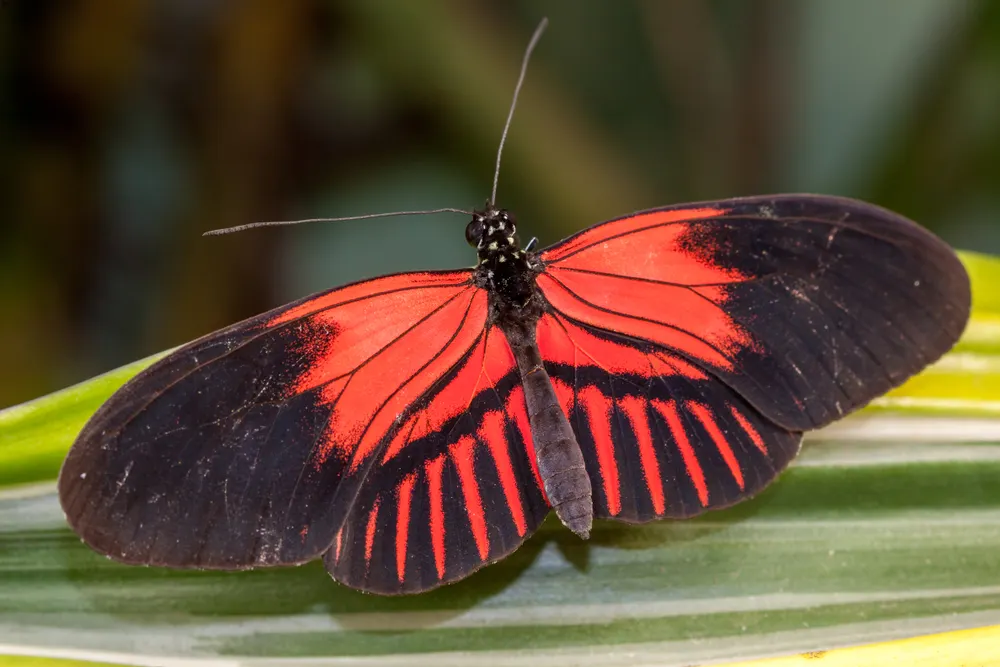Blue Moon (Hypolimnas bolina)
The Blue Moon Butterfly, known for its distinctive and mesmerizing appearance, plays a captivating role in the biodiversity of several countries. This species, comprising 20 different subspecies, showcases a fascinating array of behaviors and characteristics, particularly noted for its territorial nature and vibrant mating displays during the spring and summer seasons.
Scientific Classification
- Family: Nymphalidae
- Genus: Hypolimnas
- Common names: Great Eggfly
- Scientific Name: Hypolimnas bolina
Overview
Belonging to the dark butterfly spectrum, the Blue Moon Butterfly captures attention through its unique mating rituals and territorial displays. The name itself is derived from the striking bright blue circular patches on the male’s wings, which are reminiscent of a full ‘blue moon’ against the night sky. Observing these butterflies in their natural habitat during their mating season offers a glimpse into their complex social behaviors and the beauty of their evolution.
Description and Identification
 Caterpillar
Caterpillar
The caterpillar stage of the Blue Moon Butterfly presents a visually striking appearance with its black body, contrasted by orange segments at the head and tail. Adorned with long, branched black horns on the head and covered in orangish-black spines, these caterpillars are as fascinating as they are formidable.
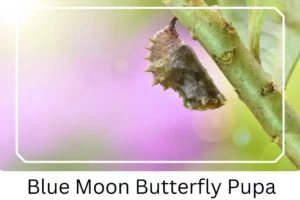 Pupa
Pupa
Transitioning to the pupa, the chrysalis adopts a brownish-grey hue, particularly around the wing area, with noticeable tubercles along the abdominal segments. Rough in texture, the pupa stage is a critical transformation period, taking approximately seven to eight days before the butterfly emerges, suspended from its host plant by a single point.
Adult Butterfly
Sexual Dimorphism: The difference between males and females is stark, with males boasting jet black wings adorned with white spots and violet iridescence, while females display a brownish-black base color, devoid of the males’ spots but featuring white edge markings.
Color and Appearance: Males exhibit a dark jet black dorsal side with white spots and violet edges, contrasting the females’ brownish-black color. The intricate white markings become visible when the wings are closed.

 Average Wingspan: Ranging from 70 to 85 mm, the Blue Moon Butterfly’s wingspan adds to its majestic presence.
Average Wingspan: Ranging from 70 to 85 mm, the Blue Moon Butterfly’s wingspan adds to its majestic presence.
Flight Pattern: Despite their slow flight, these butterflies maneuver erratically, adding an unpredictable element to their movement.
Eggs
The Blue Moon Butterfly eggs are a pale, glassy green with longitudinal ridges, presenting the first stage of life with delicate intricacy.
Quick Facts | |
| Distribution | Spanning from Madagascar to Asia and Australia. |
| Habitat | Prefers lightly wooded deciduous forests, dense, humid scrublands, and green urban areas. |
| Host Plants | Includes Sida rhombifolia and Portulaca oleracea among others. |
| Adult Diet | Primarily nectar from flowers. |
How to Identify Blue Moon Butterfly?
Identifying the Blue Moon Butterfly involves looking for key characteristics that set it apart. The male’s unmistakable bright blue patches on dark wings make it distinctive during flight or when perched with wings spread. In contrast, the female’s subtler brownish-black wings with white edge markings cater to a more understated elegance. Observers should also note the erratic flight pattern, the unique coloration of the eggs, and the habitat – ranging from lightly wooded forests to humid scrublands. Recognizing these features not only enriches the observing experience but also contributes to the conservation awareness of this remarkable species.
Did You Know?
- The Blue Moon Butterfly female is a morph mimic of the common Indian crow butterfly, showcasing nature’s intriguing mimicry for survival.
- Uniquely, female Blue Moon Butterflies exhibit maternal care, guarding their eggs laid on leaves, a rare behavior in butterflies.
- A significant threat once came from an infection by wolbachia bacteria, which specifically targeted male caterpillars, drastically reducing their population. Remarkably, within ten generations, or about five years, the males developed immunity, showcasing a rapid evolutionary response to environmental pressures.
Conclusion
The Blue Moon Butterfly is not just a species to marvel at for its aesthetic beauty but also a fascinating subject for studying environmental adaptation and behavioral ecology. Their intricate life cycle, from the visually striking caterpillar to the majestic adult butterfly, along with their unique behaviors and survival strategies, exemplify the complexity of nature.
Blue Moon Pictures

Scientific Classification

- Family: Nymphalidae
- Genus: Hypolimnas
- Common names: Great Eggfly
- Scientific Name: Hypolimnas bolina

